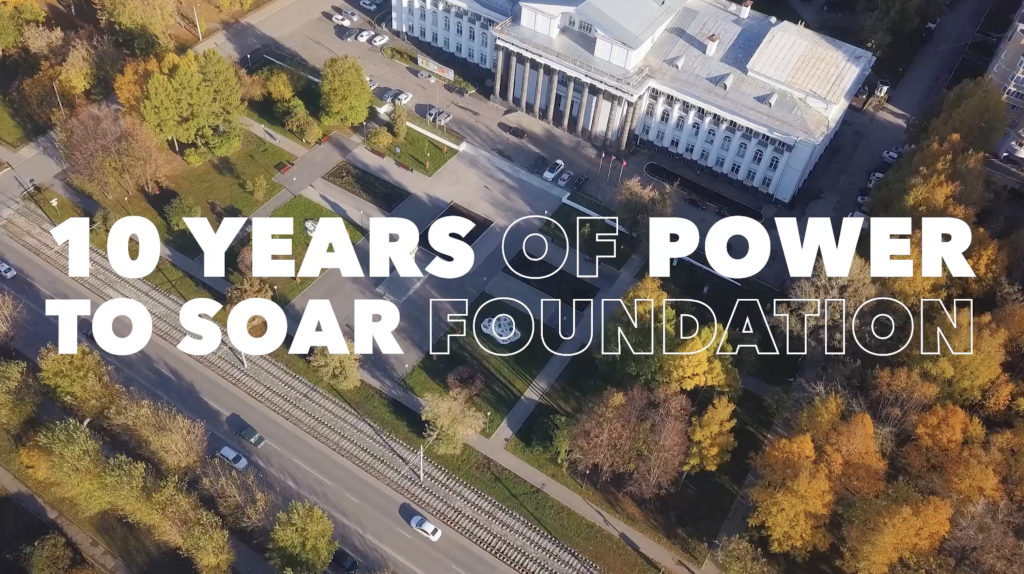How to be a foster parent begins with understanding the vital role foster parents play in providing care and stability for children in need. Foster parents offer a safe and nurturing environment for children who have experienced trauma, working closely with families, child welfare agencies, and courts to support the child’s journey toward permanency.
This guide will explore the steps to becoming a foster parent, from the application process and training to the emotional and practical responsibilities involved. Readers will learn what it takes to create a supportive home, meet the needs of children with diverse backgrounds, and help them thrive during their time in foster care. Whether you’re considering fostering for the first time or seeking more information, this article will provide valuable insights into this rewarding commitment.
Key Takeaways
- Foster parenting involves providing a safe, nurturing environment for children facing trauma and supporting their journey toward stability and permanency.
- Anyone who meets basic requirements such as age, background checks, and home safety standards, combined with training and personal dedication, can become a foster parent.
- The steps to becoming a foster parent include orientation, completing the application process, undergoing background checks, participating in training, and completing a home study evaluation.
- Foster parents have responsibilities like ensuring a child’s emotional, educational, and physical well-being while collaborating with agencies and birth families to meet the child’s needs.
- The experience comes with challenges, including emotional attachment and logistical demands, but offers profound rewards like personal fulfillment, meaningful bonds, and the opportunity to make a positive impact on a child’s life.
- Foster parents can often adopt children in their care if reunification isn’t possible, providing them with a permanent and loving home.
Table of Contents
What Is Foster Parenting?
Foster parenting is a meaningful and impactful way to support children who have experienced trauma, such as abuse or neglect. These children are placed in foster care because they’re unable to remain safely in their own homes. A foster parent provides temporary care, ensuring the child’s immediate needs are met in a safe and nurturing environment.
At its core, foster parenting involves much more than meeting basic needs. Foster parents create a sense of stability and belonging for children during a challenging time in their lives. They work closely with a team that may include the child’s family, professionals from the foster care agency, the legal system, and cultural or tribal representatives. Collaboration with these partners helps children maintain connections to their family and heritage while working towards a permanent solution, like reunification, adoption, or guardianship.

Sometimes, foster care is about more than just the support offered to the child—it extends to their family. Many foster parents play an essential role in helping biological families meet their goals so the child can return home safely. This includes encouraging positive interactions, fostering communication, and helping rebuild trust within the family dynamic.
The journey toward permanency is central to foster care. Whether a child reunites with their family or finds a new forever home through adoption, foster parents contribute to their growth, development, and emotional healing. Balancing emotional attachment and readiness to support what’s best for the child is a key part of the foster parenting experience.
Foster parents come from all walks of life. Regardless of marital status, race, gender, faith, or orientation, they share a commitment to creating a supportive and loving environment for the children in their care.
Who Can Become A Foster Parent?
Becoming a foster parent is a compassionate commitment to supporting children in need of care. Individuals and families from diverse backgrounds can qualify if they meet specific requirements and can provide a safe, nurturing environment.
Basic Requirements
Foster care agencies establish basic eligibility criteria to ensure children are placed in secure homes. Applicants typically need to meet the following:
- Minimum age requirement: Most states require applicants to be at least 21 years old.
- Stable background: Financial and emotional stability are essential for providing consistent care.
- Background checks: A criminal history check, fingerprinting, and reference verification are mandatory for all adult household members.
- Home preparation: Homes undergo inspection to confirm safety and adequacy. Personal interviews also assess the family’s readiness and intentions.
- Character references: References provide insight into the applicant’s reliability, stability, and commitment.
Basic qualifications may vary across states. It’s important for prospective foster parents to follow their state’s specific regulations during this process.
Additional Qualifications
Beyond the fundamentals, fostering requires personal qualities and additional steps that reflect the commitment needed to care for a child.
- Training completion: Most agencies conduct mandatory foster parent training to prepare families for practical and emotional challenges.
- Willingness to collaborate: Foster parents work closely with professionals, birth families, and social workers to support the child’s well-being.
- Adaptability and patience: Caring for children with emotional or behavioral challenges requires flexibility and understanding.
- Health assessments: Some programs may request medical evaluations to confirm caregivers are fit to handle their responsibilities.
While specific processes may differ, these additional qualifications prepare individuals for the multifaceted role of fostering. Those who fulfill these standards make a lasting impact on the lives of children in foster care.
Steps To Become A Foster Parent
Becoming a foster parent is a rewarding journey that involves careful preparation and dedication. Each step ensures prospective foster parents can provide a safe, stable, and nurturing environment for children in need.
Attend An Orientation Session
The journey begins with an orientation session. These sessions, offered by local departments of children and family services or foster care agencies, provide critical insights into the foster parenting process. Participants receive an overview of expectations, requirements, and the support available to them. Questions are encouraged during these sessions, helping prospective parents assess if fostering is the right path for their family.
Complete The Application Process
Following the orientation, applicants are required to complete formal paperwork. This step includes submitting an application for a family home license or Resource Family Approval. Important documents, like verification of employment, housing proof (ownership or rental), and character references, are essential. The application process confirms the family’s stability and readiness to foster.
Undergo Background Checks And Medical Clearance
Every adult in the household must pass background checks addressing criminal history and child abuse/neglect records. These checks ensure a safe environment for children entering care. Also, prospective foster parents need medical clearances to confirm they can meet the physical and emotional demands of fostering. Agencies assist with coordinating these necessary verifications.
Participate In Training Programs
Training equips foster parents with tools to understand and address the unique needs of children who have experienced trauma. Sessions, such as the TIPSMAPP course, educate parents on behavioral, emotional, and developmental challenges. These free programs also emphasize communication, empathy, and collaboration with birth families and professionals.
Home Study And Evaluation
A home study is a detailed review of the household’s living situation, personal characteristics, and readiness to foster. Through interviews, home visits, and discussions with all household members, agencies assess suitability for foster care. This evaluation typically spans several months, ensuring the applicant can provide a supportive and nurturing space.
Licensure follows the completion of these steps, and families are guided to accept placements that align with their parenting abilities and preferences.
Responsibilities Of A Foster Parent
Being a foster parent means embracing a multifaceted role filled with challenges and rewarding experiences. It involves ensuring the child’s holistic well-being while working collaboratively with others to secure a stable and supportive environment.
Providing A Safe And Nurturing Environment
Foster parents must provide a home where children feel safe and valued. This includes creating consistency in daily routines, maintaining a physically secure living space, and offering emotional support. The environment should allow children to express themselves freely without fear of judgment or harm.
Meeting agency policies is crucial. Homes should pass fire, health, and safety inspections, with adequate sleeping space and vaccinated pets. Foster parents agree to use nonphysical discipline and uphold a nonviolent atmosphere, ensuring that children receive appropriate guidance and boundaries.
Trust-building plays an essential role in nurturing. Many children in foster care have faced trauma, so patience and understanding are key to helping them adjust to their new surroundings. Listening attentively to their concerns and promoting open communication helps children start to heal and feel that they belong.
Supporting The Child’s Emotional And Educational Needs
Addressing emotional needs often requires sensitivity and observation. Foster parents should note behavioral patterns, acknowledge underlying feelings, and respond empathetically. Regular conversations about the child’s thoughts and challenges encourage emotional growth and confidence.
Education is equally important. Collaboration with teachers and schools helps children meet academic goals, while advocacy ensures their unique needs are met in classroom settings. Transporting children to school or extracurricular activities promotes engagement and fosters a sense of normalcy.
Foster parents must also share updates with caseworkers. Reporting milestones, concerns, or problems ensures that the child’s care is aligned with agency objectives and family goals. Each effort contributes to the child’s overall development and provides them with a foundation to thrive.
Challenges And Rewards Of Foster Parenting
Foster parenting brings both unique challenges and profound rewards, shaping lives in meaningful ways. While the experience can test patience and adaptability, it also offers opportunities for growth, connection, and purpose.
Emotional Challenges
Children in foster care often carry the weight of trauma, such as neglect or abuse. Adjusting to a new home can lead to trust issues and behavioral struggles, requiring foster parents to exhibit patience and understanding. They may also face difficult moments when children express anger or sadness, reflecting past experiences. Balancing their emotions with the needs of the child can test even the most prepared.
Saying goodbye when children reunite with their biological families or move to another permanent solution, such as adoption, can be emotionally taxing. Foster parents must navigate their own emotions while celebrating the child’s progress toward stability and permanency.
Practical Challenges
Managing day-to-day responsibilities can feel overwhelming. Coordinating school schedules, medical appointments, and therapy sessions, while maintaining stability at home, requires strong organizational skills. Foster parents must also stay in constant communication with caseworkers, offering regular updates about the child’s well-being and progress.
Another practical challenge arises when fostering children from different cultural or social backgrounds. Parents must actively learn about and integrate the child’s heritage into daily routines to help them feel seen and valued.
Collaborative Challenges
Foster parents often work with a team that includes the child’s family, social workers, and therapists. Maintaining open communication and navigating differing perspectives can be demanding. Supporting reunification goals, even when personal bonds with the child are strong, requires a selfless commitment to the child’s welfare.
Rewards of Foster Parenting
Even though its challenges, foster parenting is profoundly rewarding. Providing a safe, nurturing environment can transform a child’s life. Many foster parents witness remarkable growth as children heal from past trauma and develop confidence.
The opportunity to guide children through critical life skills often leaves a lasting impact. From teaching basic routines to fostering independence, these everyday interactions help shape their future.
Creating meaningful bonds with the children and their families offers personal fulfillment. Seeing a child reunited with their biological family or achieving permanency reaffirms the value of their role in the journey.
Foster parenting also allows individuals to leave a legacy of care and compassion. The positive changes they foster ripple far beyond the immediate relationship, shaping the child’s outlook on life and relationships into adulthood.
Foster parenting combines selfless dedication with moments of indescribable joy, making it an experience unlike any other. Challenges may arise, but the rewards remind parents why their role is both unique and deeply impactful.
Can Foster Parents Adopt A Child?
Foster parents often wonder if they can adopt children in their care. In many cases, it’s possible. While most children in foster care reunify with their biological families, adoption becomes an option when reunification isn’t feasible. Courts may terminate parental rights to ensure a safe, permanent home for the child.
When adoption is considered, foster parents play a significant role in the transition. Their established bond with the child can provide emotional stability during this process. , many foster parents choose to adopt their foster child, offering continuity and a sense of belonging.
But, adoption requires meeting additional legal criteria. Foster parents must complete an adoption home study and follow state-specific regulations. These steps assess their readiness to become permanent guardians of the child. They involve interviews, home inspections, and legal documentation.
It’s a deeply rewarding path but can also bring challenges. The move from fostering to adopting involves navigating emotions, logistics, and legal processes. Yet, for families prepared to make this lifelong commitment, it provides unparalleled joy and ensures the child grows up in a loving, stable environment.






